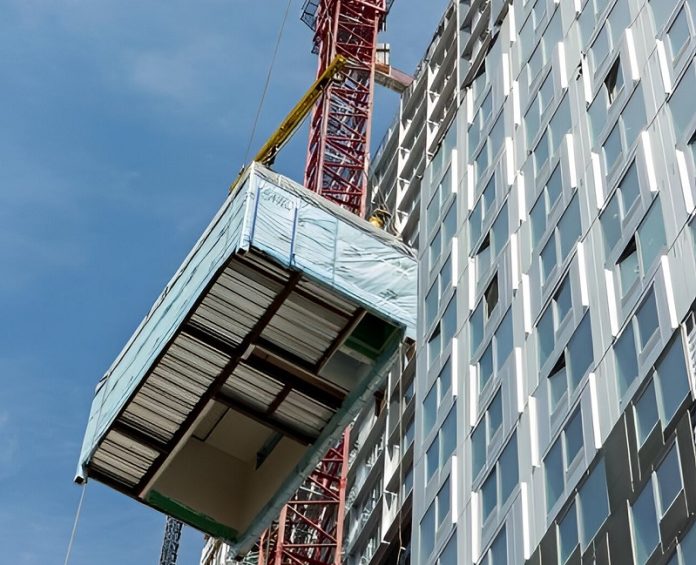
Researchers from the Department of Energy’s Oak Ridge National Laboratory and the University of Maine have developed a groundbreaking, eco-friendly floor panel that could revolutionize the construction industry.
This new panel, made from recyclable natural materials, is strong enough to replace traditional construction materials like steel.
The project is part of the Sustainable Materials & Manufacturing Alliance for Renewable Technologies (SM2ART) program.
Previously, the SM2ART team created BioHome3D, the first home in the United States to be fully constructed from biologically based materials using 3D printing.
Both BioHome3D and the new floor panel were recently showcased at the U.S. Department of Housing and Urban Development’s 2024 Housing Innovation Showcase on the National Mall.
The SM2ART Nfloor cassette panel aims to replace the traditional steel-and-concrete assemblies used in apartment and condominium buildings.
This technology has the potential to create strong, eco-friendly sections for multistory buildings, promoting the use of sustainable materials in construction.
The panels are designed to be used in modular construction, where complete sections of a building are manufactured offsite and then assembled on location.
This method is becoming a cost-effective way to build sustainable residential structures in urban areas.
Katie Copenhaver, an ORNL researcher, emphasized the significance of this development. “By using bio-based, large-scale 3D printing, we replaced an assembly made from 31 parts and three materials with a single-material floor panel that is ecologically friendly,” she said.
“And it has the same strength as traditional steel floor fabrication.”
The strength of the SM2ART floor cassette comes from its unique composition of polylactic acid (PLA) and wood flour. PLA is a biodegradable plastic derived from corn residue, while the wood flour is made from the waste of lumber processing.
This blend creates a recyclable, large-format material that can be used in 3D printing.
Scott Tomlinson, a structural engineer with the University of Maine’s Advanced Structures and Composites Center, praised the material.
“The PLA and wood flour blend is excellent for producing recyclable, large-format additively manufactured parts,” he said. “This single-piece floor assembly is stiffer and provides a better walking experience compared to the steel-concrete assembly it replaces.”
To create the floor panel, researchers used a large-scale 3D printer to deposit the PLA/wood flour mixture in a precise, geometric shape. The printer worked continuously and autonomously, producing the SM2ART Nfloor cassette in about 30 hours. This method saved about 33% of the labor required to construct a similar steel floor assembly by hand.
This innovative floor panel represents a significant step forward in sustainable construction. By utilizing natural, recyclable materials and advanced 3D printing technology, the SM2ART team has created a product that could reduce the environmental impact of building construction and promote the use of green materials in the industry.


